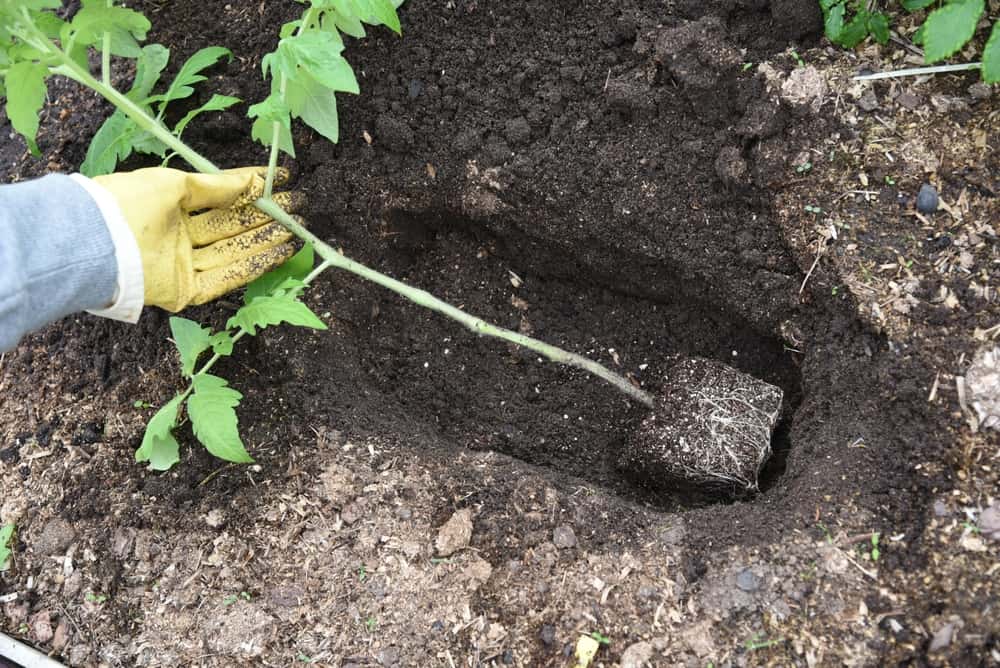
Tomatoes are a popular and versatile garden crop, cherished for their vibrant fruits and culinary versatility. Understanding the depth of tomato plant roots is essential for successful cultivation and optimal plant health. In this article, we’ll delve into the intricacies of tomato plant roots, exploring their structure, depth, and vital role in plant growth and development.
I. Introduction
A. Importance of Tomato Plant Roots
The roots of tomato plants play a crucial role in nutrient uptake, water absorption, and overall plant health. A well-developed root system is essential for anchoring the plant in the soil, providing stability and support as it grows and matures. Understanding the depth and structure of tomato plant roots is key to optimizing growing conditions and maximizing yields.
B. Overview of Tomato Plant Root System
Tomato plants possess a complex root system composed of primary, secondary, and fine roots. These roots work in concert to explore the soil, extract water and nutrients, and support the above-ground portions of the plant. By understanding the structure and function of tomato plant roots, gardeners can implement strategies to promote healthy root growth and enhance overall plant vigor.
C. Purpose of the Article
The purpose of this article is to provide insight into the depth of tomato plant roots at various growth stages and explore the factors that influence root development. By understanding the depth and structure of tomato plant roots, gardeners can implement best practices for watering, soil management, and root care to ensure the health and productivity of their tomato plants.
II. Structure of Tomato Plant Roots
A. Primary Root System
The primary root system of tomato plants consists of the main root, known as the taproot, which emerges from the seed during germination. The taproot serves as the primary anchor for the plant and gives rise to lateral roots that extend outward into the surrounding soil.
B. Secondary Root System
As the tomato plant matures, the secondary root system develops, consisting of a network of fibrous roots that branch off from the main taproot and lateral roots. These secondary roots explore the soil in search of water and nutrients, branching and ramifying to maximize the plant’s access to essential resources.
C. Fine Root System
The fine root system of tomato plants consists of delicate, hair-like roots that emanate from the secondary roots and actively engage in nutrient absorption and water uptake. These fine roots have a high surface area-to-volume ratio, allowing for efficient nutrient exchange with the surrounding soil.
III. Depth of Tomato Plant Roots
A. Early Growth Stage
During the early stages of growth, tomato plant roots tend to remain relatively shallow, concentrating in the top few inches of soil. At this stage, the primary focus of root development is on establishing a strong foundation and acquiring essential nutrients and water for growth and photosynthesis.
B. Mature Growth Stage
As tomato plants mature and establish themselves more firmly in the soil, their roots gradually penetrate deeper into the ground in search of additional moisture and nutrients. While the majority of roots may still be concentrated in the topsoil, some roots may extend several feet deep under optimal growing conditions.
C. Factors Affecting Root Depth
Several factors can influence the depth of tomato plant roots, including soil type, moisture availability, temperature, and cultural practices. Sandy soils, for example, may encourage deeper root penetration, while heavy clay soils may restrict root growth. Adequate moisture and proper irrigation practices are also critical for encouraging deep root development.
IV. Role of Tomato Plant Roots
A. Absorption of Water and Nutrients
One of the primary functions of tomato plant roots is the absorption of water and nutrients from the soil. The fine root hairs that cover the surface of the roots are specialized structures designed to maximize nutrient uptake, allowing the plant to thrive and produce healthy foliage and fruits.
B. Anchorage and Support
Tomato plant roots provide essential anchorage and support for the above-ground portions of the plant, preventing it from toppling over in windy conditions or during heavy fruiting. A well-developed root system ensures stability and resilience, enabling the plant to withstand environmental stresses and adverse growing conditions.
C. Interaction with Soil Microorganisms
Tomato plant roots also play a vital role in interacting with soil microorganisms, including beneficial fungi and bacteria that contribute to soil health and fertility. These symbiotic relationships facilitate nutrient cycling, improve soil structure, and enhance plant growth and resilience to pests and diseases.
V. Tips for Healthy Tomato Plant Roots
A. Proper Watering Techniques
To promote healthy root growth, water tomato plants deeply and infrequently, allowing the soil to dry out slightly between watering intervals. Avoid overwatering, which can lead to waterlogged soil and root rot, and provide adequate drainage to prevent water accumulation around the roots.
B. Soil Preparation and Maintenance
Prepare the soil thoroughly before planting tomatoes, incorporating organic matter such as compost or aged manure to improve soil structure and fertility. Mulch around the base of plants to conserve soil moisture, suppress weed growth, and regulate soil temperature, creating optimal conditions for root growth and development.
C. Avoiding Compaction and Root Disturbance
Minimize soil compaction and root disturbance around tomato plants by avoiding excessive foot traffic and mechanical cultivation near the root zone. Protect the delicate fine roots from damage by cultivating and weeding by hand, taking care not to disturb the soil excessively or injure the roots.
In conclusion, understanding the depth and structure of tomato plant roots is essential for successful cultivation and optimal plant health. By promoting healthy root growth through proper watering, soil management, and cultural practices, gardeners can ensure the vigor and productivity of their tomato plants, leading to bountiful harvests of delicious, homegrown tomatoes.


